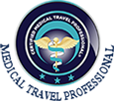Latest Innovations in Limb-Lengthening Techniques
The field of limb-lengthening has made remarkable progress in recent years, introducing several innovative techniques and technologies aimed at improving outcomes and patient experience.
Magnetically Controlled Intramedullary Lengthening Nails (MCILN)
These devices have transformed limb lengthening and deformity correction:- They allow for precise and accurate distraction, leading to excellent patient outcomes and high satisfaction rates.
- MCILNs demonstrate improved healing rates and patient comfort compared to external fixation while maintaining similar costs.
- Approximately 10,000 MCILNs have been implanted globally, with around 749 cases documented in published research.
PRECICE Intramedullary Limb Lengthening System
This state-of-the-art system offers numerous advantages:- Utilizes magnetic interaction between the implanted device and an external remote control (ERC).
- The ERC enables precise lengthening or shortening with the touch of a button, either in a clinic or at home, enhancing convenience and comfort.
FITBONE System
The FITBONE system is a fully implantable, computer-controlled distraction device with unique features:- Employs the Ilizarov method of callus distraction without the need for external fixation.
- Activated via a handheld remote that communicates with an implanted receiver.
- Allows for up to 5 cm of bone lengthening in a single segment.
Taylor Spatial Frames (TSF)
Taylor Spatial Frames have enhanced the precision and outcomes of limb corrections:- Utilize hexapod strut-linked platform technology, similar to flight simulators, for exceptional accuracy.
- Offer web-based correction plans, enabling more reliable adjustments and precise results.
- Particularly effective for addressing complex, multi-plane deformities.
Bone Transport Techniques
Bone transport is a specialized method used for treating conditions such as limb length discrepancies, non-unions, and bone infections.
Genetic Research and Reverse Dynamization
Emerging research focuses on:- Understanding the genetic factors that influence healing and bone regeneration.
- Utilizing reverse dynamization techniques to accelerate fracture healing during limb-lengthening procedures.
Conclusion
These advancements have significantly enhanced the precision, comfort, and recovery times associated with limb-lengthening procedures. Continued research promises even more effective and minimally invasive techniques for limb lengthening and deformity correction, offering patients improved outcomes and quality of life.

Get a free price quote
Please fill out the form.
We will prepare a treatment proposal for your condition.
We will prepare a treatment proposal for your condition.








